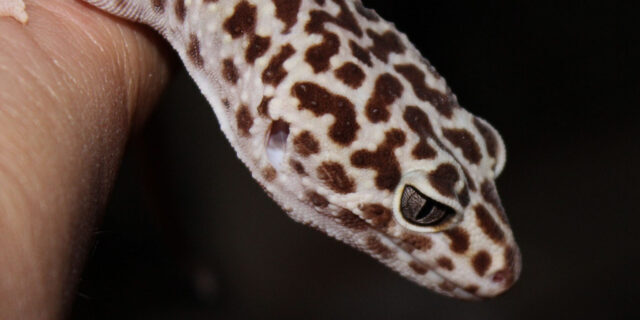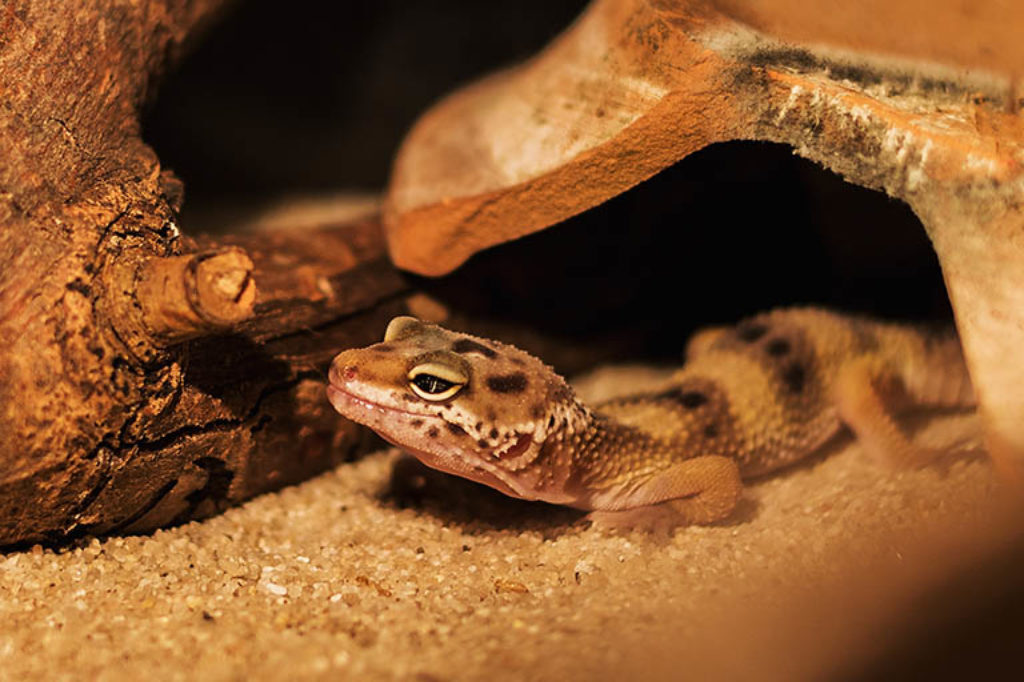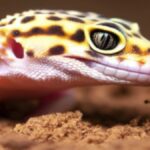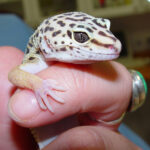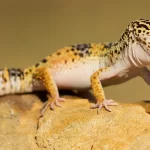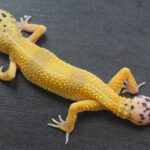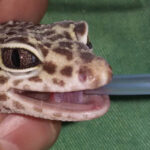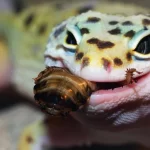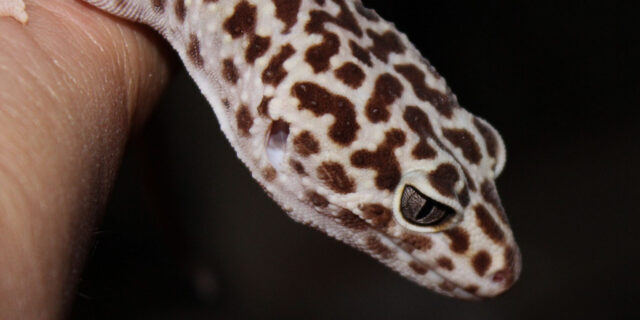
The photoperiod is the time a Leopard gecko is exposed to light (vs. darkness) – over a period of 24 hours. When placed in an artificial environment, the photoperiod needs to be considered as it has an effect on a Leopard gecko’s activity and reproduction.
The photoperiod is the period of time each day during which an organism receives illumination. In other words, it is the day length. In nature, the photoperiod is mainly determined by the sun. For Leopard geckos, the photoperiod affects the day-night-rhythm which has an effect on their activity and is (over time) used to determine the four seasons of the year.
Leopard geckos are crepuscular and nocturnal animals, meaning they are mainly active from dusk until dawn. During the day, Leopard geckos will hide away and sleep most of the time. When comparing the amount of time Leopard geckos actually spend in lit areas with, for example, diurnal animals, it is often concluded that the photoperiod plays an insignificant role.
Even though this might not be what is seen in pet Leopard geckos, scientists have determined that the amount of melatonin (see later) varies when there is a variation in their photoperiod – which suggest that photoperiod might have an effect on their reproduction. Literature also states that irregular photoperiods and excessive periods of darkness are stressors of Leopard geckos(29).
Natural photoperiod for Leopard geckos
When looking at the day-night rhythms in South Asia there is a relatively small difference between seasonal photoperiods. Starting to increase after winder, daylengths are at their longest in June (about 12 hours and 50 minutes). The shortest days are in December and January (11 hours and 30 minutes). This gives about 11 hours and 10 minutes of nighttime during summer and 12 hours thirty during the winter months. During autumn and spring the daylight length will gradually change towards or away from about 13 hours per day. Also see natural distribution and habitat of Leopard geckos for more information.
The pineal gland of Leopard geckos
Most vertebrates, including Leopard geckos, have what is called a pineal gland (also referred to as a ‘third eye‘ or ‘pineal eye‘). It is a small pea-shaped gland situated in the brain which is sensitive to environmental light (i.e. the photoperiod). The pineal gland of Leopard geckos should not be confused with the Jacobson’s organ (which is an organ used to ‘smell’). Although some of the pineal gland’s functions are still unknown, it is known that it secretes melatonin (a hormone) when lizards are exposed to light (e.g. daylight). Being dependant on the seasonal changes (in other words the photoperiod), the pineal gland of most lizards are well developed.
Longer days (13 hours per day) will lead to more melatonin secretion and vice versa. In other words, when the concentration of melatonin is relatively low (i.e. when the day-length is relatively short when compared with the night-length – about 11 hours per day) a Leopard geckos’s brain can determine that it is winter. Leopard geckos can also determine whether it is spring or autumn through regular changes of melatonin. When there is a sudden change in the concentration from low to high (i.e. during spring) these hormones, among other things, stimulate breeding behaviour.
Controlling the photoperiod for pet Leopard geckos
Even though there is a seasonal variation in the photoperiod in nature, the well-being and breeding patterns of pet Leopard geckos do not seem to change significantly. Most Leopard gecko keepers prefer to use natural room lighting or 12 hours of light where artificial light needs to be provided. Artificial light can either be supplied by using a light bright enough to lid the room or as a low wattage (40 Watt) light or a reptile night light shining onto or into the container. Whatever lighting is used, it should not interfere with the temperature of the keeping container (also see supplying heat to pet Leopard geckos for more information.
To create a photoperiod that resembles the day-night cycles in South Asia, lighting equipment can be used. By changing the on-off light cycles in combination with a seasonal roster a more natural photoperiod can be created. This process can either be done manually or by using a programmable electric timer.
As mentioned previously, lighting should be on for about 13 hours per day during the three main months of summer. During the three winter months, the lights should be on for 11 hours and off for 13 hours. During the three months of spring, the light period should be gradually increased from 11 to 13 hours per day and from 13 to 11 hours per day during autumn.
References
- 30) Boyer, Thomas H.; Garner, Michael M.; Reavill, Drury R.; Steffes, Zachary J. Leopard Gecko Diseases and Care. Proceedings. Retrieved 22 July 2020
Leopard geckos 101 is a free, informative website helping to improve the quality of pet Leopard geckos. If you found value in any of its content, please consider making a donation. Also see the other ways to support Leopard geckos 101.

